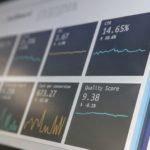As businesses strive to remain competitive and increase profitability, many turn to data-driven approaches to optimize their processes. By leveraging data and analytics, companies can identify improvement areas, spot growth opportunities, and gain deeper insights into their operations.
This blog post will discuss the advantages of leveraging data-driven approaches to optimize business processes and how agencies like Inspectorio can help organizations reach their goals. We’ll also explore examples of how this approach has been implemented successfully.
The benefits of data-driven optimization
Data-driven optimization is a process of using data to make decisions and improve business processes. It involves analyzing data to gain insights, inform decisions, and make adjustments to optimize a company’s performance. Data-driven optimization can benefit businesses in many ways, including increased efficiency, cost savings, better customer service, and improved decision-making.
Data-driven optimization allows businesses to identify areas of inefficiency and ineffectiveness in their current processes and potential areas for improvement. This can lead to more efficient workflows and better resource allocation, helping companies save money and maximize their productivity. By understanding what works and what doesn’t, businesses can make data-driven decisions that lead to cost savings, improved customer service, and more efficient use of resources.
Data-driven optimization can also provide valuable insights into customer behavior, enabling companies to understand their target audience better. With this information, it allows businesses to develop more effective marketing campaigns and tailor their products and services to meet customer needs. This can lead to increased customer satisfaction, loyalty, and retention.
Finally, data-driven optimization can help companies better understand the impact of their decisions. By tracking the results of their actions, businesses can get a better sense of what works and what doesn’t, allowing them to make more informed decisions in the future. A data-driven optimization is a powerful tool that can significantly benefit businesses of all sizes.
How to get started with data-driven optimization
A data-driven optimization is a powerful tool for businesses to improve processes and generate value. To get started with data-driven optimization, it’s essential to have a clear understanding of the goals you are trying to achieve. This will help you identify the data points and metrics most helpful to focus on.
Once you have identified the data points you need, you’ll need to begin collecting and analyzing the data. This may require developing a system for data collection or implementing tools like analytics software. Once you have all the data points, you can see how they correlate and affect your business processes.
Once you understand the data and its correlations, you can begin developing strategies to optimize your business processes. Also, use predictive analytics to forecast future outcomes and make decisions accordingly.
Finally, it’s crucial to track the performance of your strategies over time to ensure that they are still effective. Data visualization tools can quickly identify any changes in trends or results. By regularly monitoring your data and making adjustments as necessary, you can ensure that your data-driven optimization efforts are successful.
The role of data analytics in data-driven optimization
Data analytics plays a crucial role in the optimization of business processes. Through data analysis, businesses can identify patterns and trends that can inform decisions and drive optimization efforts.
For example, by analyzing customer behavior data, companies can understand customer preferences, optimize customer journeys, and improve the effectiveness of marketing campaigns.
Data analytics also helps businesses identify areas that require attention and identify strategies to increase efficiency. By gathering data from various sources, such as customer feedback surveys and sales figures, companies can gain insight into how their business processes function and where improvements can be made.
Data analysis can also be used to uncover areas of improvement in operations, such as streamlining workflow processes, increasing customer satisfaction, and boosting employee productivity.
Finally, data analytics can help businesses make more informed decisions about their operations. By analyzing data from multiple sources, companies can better understand the effects of their choices and use this information to determine the best course of action for achieving their desired outcomes. This insight can be invaluable in optimizing business processes for maximum efficiency.
The importance of data visualization in data-driven optimization
Data visualization is an essential tool for data-driven optimization. Data visualization enables you to look at large amounts of data in a way that is both easy to understand and visually appealing. When you can quickly and easily analyze your data, it can provide invaluable insights you may not have otherwise seen.
Data visualization allows you to see trends and relationships within your data that you wouldn’t be able to see if you were just looking at the raw data. This helps you identify patterns and correlations between different factors, enabling you to make more informed decisions about optimizing your processes. For example, you might be able to identify areas where processes could be improved or areas that require additional focus.
Data visualization also helps you communicate complex ideas in a way that’s easy for others to understand. By presenting information visually, you can explain complex concepts in a more digestible form, allowing stakeholders to understand more easily what’s going on and how it impacts their business. This makes it easier to get everyone on the same page and develop strategies for improvement.
In short, data visualization is an invaluable tool for data-driven optimization. It helps you spot patterns and trends that you may have otherwise missed and present complex ideas in an easy-to-understand way. So if you want to optimize your business processes, don’t forget to leverage data visualization as part of your data-driven optimization efforts.
Conclusion
Data-driven optimization is a powerful tool for businesses looking to increase efficiency and reduce costs. By trusting specialists like Inspectorio, companies can identify areas of improvement and develop actionable solutions to optimize processes. Data visualization can also be used to illustrate clearly how data-driven approaches positively impact the organization. By focusing on data-driven optimization, businesses can stay ahead of the competition and remain successful in an ever-changing business landscape.
















